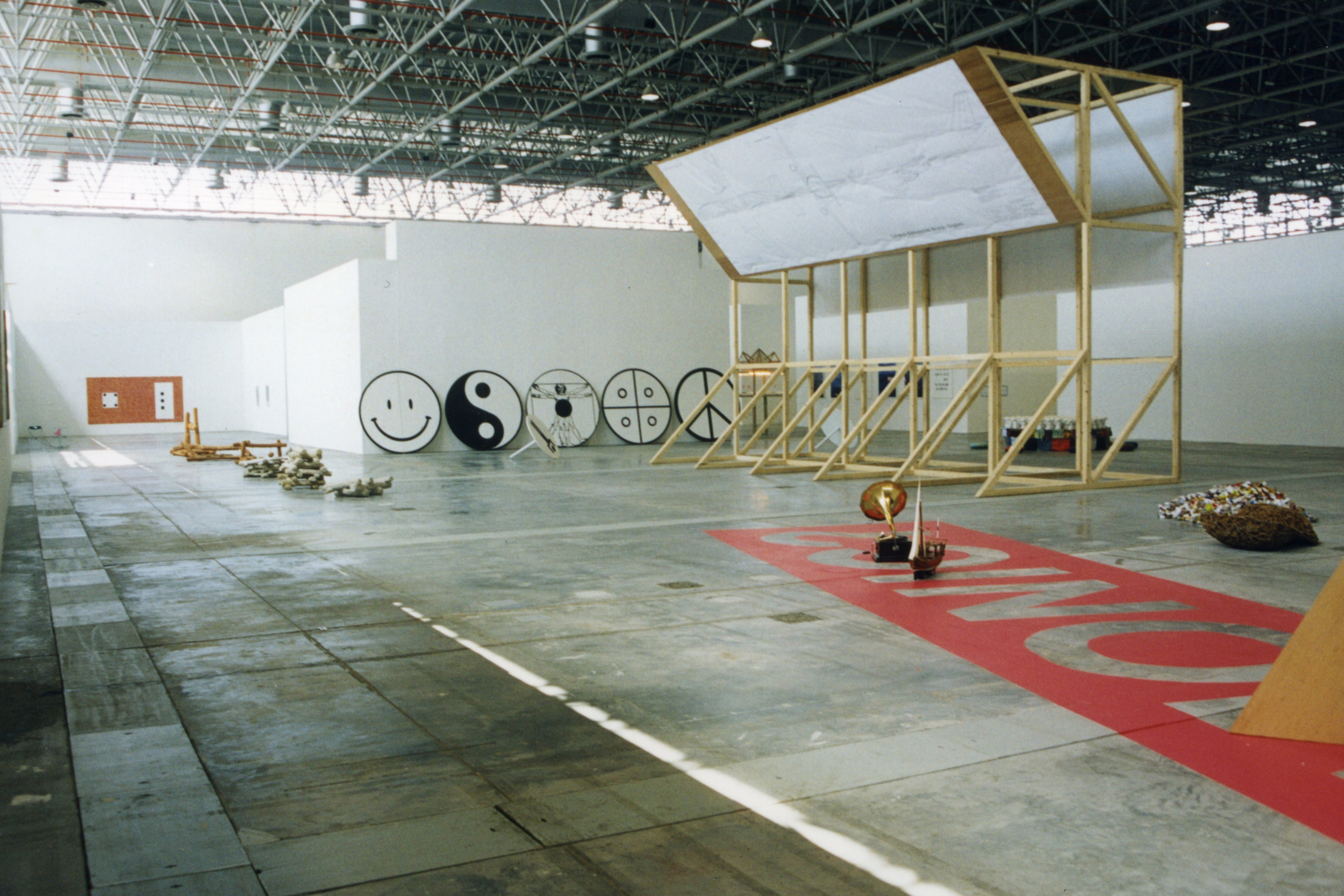
Import/Export, 2003
Gavin Wade
Import/Export, 2003
search


Gavin Wade
Import/Export, 2003
Gavin Wade interviewing Vito Acconci.
GW Do you have any set systems for responding to a request? What's the difference between someone asking you to design a house or Kenny Schachter asking you to design a gallery?
VA We try to start with what either a requested programme or an implied programme is. We do think specifically in terms of how something is going to be used. We never start with what something is going to look like. If there is form, it comes later. It always starts with a person's activity or sets of behaviour within that space. What is a person coming there to do, what can they possibly do once there. We think much more in terms of instrument, action and in someways we probably think of these spaces as performance spaces for viewers. I don't think my earlier work has totally disappeared.
GW No, I don't. Being in your contemporary gallery space is a very performative experience, it is quite antagonistic and even threatening. It has qualities of some bizarre sex club and you feel as though you should be moving around the room in a
certain manner.
VA Yeah it could be. But well, I don't know about this
part yet, but how useful is it for people showing art? I don't know yet. We started with the goal that this would be an adaptable open space but it's
not totally.
GW Is that why you were interested in Frederick Kiesler's architecture from earlier in the century?
VA The Kiesler influence that has been written about came from Kenny Schachter. It's not that we're not interested in Kiesler but Kenny brought it into the agenda. I know it's been reported that we based it on Kiesler but we based it more on Kenny's rumour of Kiesler.It was in Kenny's mind and so part of the programme handed to us. Kiesler is someone that I have known of for a long time but more as a myth. I've seen some of the endless house models and the space he designed
in Jerusalem.
GW I just came across him through the earlier structures he made in the 1920s, like the L-Type Display Unit that I adapted and built for the first show in your Contemporary gallery space. I think those structures are amazingly innovative and felt as if the ideas were never completely carried
through really.
VA I didn't know about the gallery space he had designed for Peggy Guggenheim in the 40's and even now I know it so little.
GW Yeah, they have become quite hidden within the history of 20th Century Art.
VA I wonder why that is?
GW Well, I think it's because they propose a radical trajectory other than one leading towards the "white cube" gallery.
VA Yeah, but the white cube wasn't always the standard.
GW No, but within the same decade as Alexander Dorner is arranging the collection at the Hanover Landesmuseum towards the model for the sparse museums that would take over for the rest of the century, here's Kiesler putting forward something much more noisy and organic and probably even difficult. But you know, Dorner then was inviting EI Lissitzky to come and make the Abstract Cabinet which also combines with Kiesler's trajectory.I find this moment fascinating because of the potential that exhibition design seemed to have towards the production of space for art to occur. They were really m3klng ad out of some other business career that wasn't seen as such an opportunity for an artist. I love that idea of EI Lissitzky saying "Now that I'm designing exhibitions this is the most important art that I have made. Paintings, drawings? No, now I'm making really powerful art."
I suppose I'm just thinking of equating that movement away from being an "artist" with your not making art anymore but that you still consider that you are using this notion of an "art activity" that you mentioned before.
VA Yeah, art activity is still tremendously important to me.
GW So is it just the definition of what an artist is that's a problem?
VA When I started doing art, and remember m background was writing and then it started shifting into something else, the art context seemed to be a place for what I was doing at the end of the 60's because art seemed to be a field that had no inherent characteristics of its own except for the fact that it could be called art. So, you could import into art. You could import from psychology, from sociology, from history from the news and it seemed like this really vital thing. In retrospect I wonder is the direction wrong? If you import the world into art does it then become boxed in? Can't it go the other way around? And if you think of an art activity, then it can go the other way around.
08.09.02 Dumbo, New York (7 mins 0 secs selected from 74 mins 36 secs) A longer section of this interview can be found in Tank Magazine, Vol.3, issue 4.

Sharjah Biennial 6